Lost Islamic History: Reclaiming Muslim Civilisation from the Past
£12.30
Over the last 1,400 years, a succession of Muslim polities and empires expanded to control territories and peoples stretching from southern France to East Africa and South East Asia. Yet many of the contributions of Muslim thinkers, scientists and theologians, not to mention statesmen and soldiers, have been overlooked. The bestselling Lost Islamic History, now in a new updated edition, rescues from oblivion a forgotten past, charting its narrative from Muhammad to modern-day nation-states. From Abbasids and Ottomans to Mughals and West African kings, Firas Alkhateeb sketches key personalities, inventions and historical episodes to show the monumental impact of Islam on global society and culture.
Read more
Additional information
| Publisher | 2nd edition (21 Sept. 2017), C Hurst & Co Publishers Ltd |
|---|---|
| Language | English |
| Paperback | 248 pages |
| ISBN-10 | 1849046891 |
| ISBN-13 | 978-1849046893 |
| Dimensions | 19.56 x 2.29 x 12.95 cm |






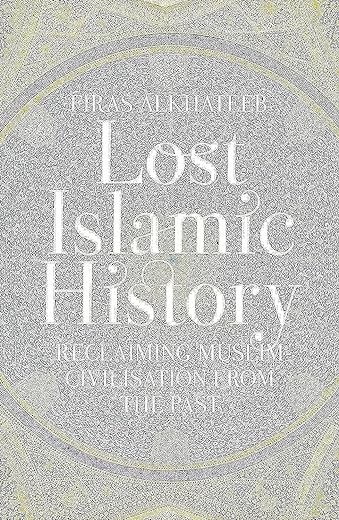
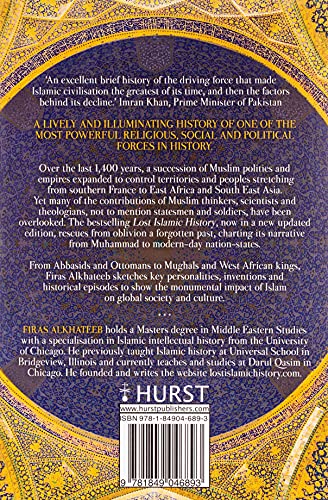

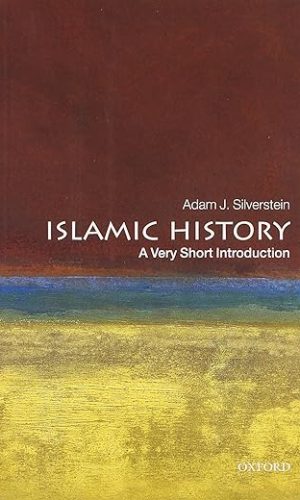
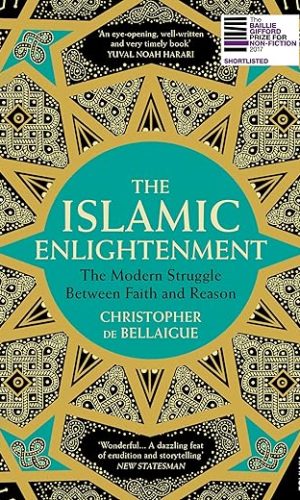

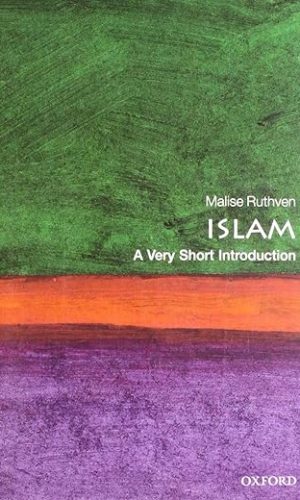
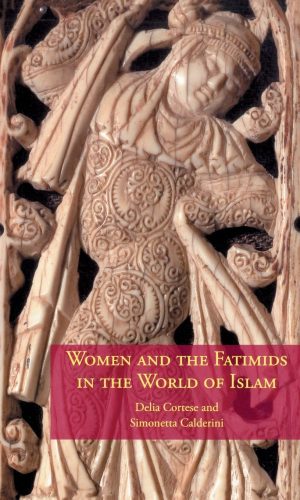

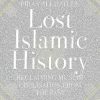
by Ammad Qureshi
A book so good I gifted a copy. The breakdown of the book is excellent, giving an insight into pre-Islamic Arabia and then the countless years of Islamic history, broken up into informative and exciting sections. Pictures are present in the centre of the book to consolidate learning and put the content into perspective. The book goes as far as the end of the Ottoman empire, to cover essentially all of the notable historical moments. A must read!
by Mohamed Bapu
Well written in an objective high level manner. Wished I had read this when I was a student, really helps to understand how we have ended up as we have.
by Ane
Lovely book for history beginners like me. Written in simple and easy to understand format. Came to know lot of things that were new to me and certainly creates motivation to go deeper into the subject. Would highly recommend.
by The Avid Reader
Contrary to what might be perceived, this is not an encyclopaedia of inventions – it is a summary of Islamic history, covering all of the geographical locations that Islam ruled over, from the time of the seerah to the 20th century.
The first two (very short) chapters summarise pre-Islamic Arabia and the seerah of the Prophet (saw) – it is very apparent how powerful the Islamic ideology is, as it alone transformed backward, insignificant desert pagans into the greatest world leaders the world has ever known, in the space of a mere 23 years.
Leading on from there, the next chapter focuses on the Khulafaa Rashidun (approx. 30 years): Abu Bakr setting the precedent for the role of the caliph, expansion, the encounters with the Roman, Byzantine and Sassanid empires and religious minorities living under Islam. It then goes into the chaos caused by the Khawaarij.
Chapter 4 starts with Muawiyaa/Banu Umayyah, the beginning of ‘hereditary rule’ and the conflict of succession they had with Husayn ibn Abi Talib and Abdullah ibn al Zubayr. It makes a note of further expansion into Spain and into India, making it the world’s largest state after less than 100 years since revelation began. The Abbasids then forcibly took power.
Chapter 5, ‘Intellectual Golden Ages’, looks at the vast number of scientific and technological achievements achieved under the Abbasids; hospitals, language, universities, astronomy, mathematics, etc. The establishment of ‘Bayt al Hikmah’ (the House of Wisdom) spurred this, however it also led to many theological issues; the Islamic method of thinking was diluted and many started to adopt Greek logic (mantiq) as a basis for thinking to ‘explain’ theology, leading to the Mutazila, Asharis, etc. The final sub-chapter is on Shi’ism.
The following chapter, rightly titled ‘Upheaval’, looks into Ismailism, the Crusaders and the Mongols: the Qarmatians, Pope Urban II, the Ayyubid dynasty, the Mamluks, Genghis Khan and his son Ogedai, and Baghdad being ransacked.
The next chapter specifically focuses on al-Andalus, expanding when an Umayyad prince fled there during the massacre of the Abbasids. Points mentioned include: Granada, Cordoba, the Taifa kings, sciences, cultural development and the ‘Moriscos’. The Spanish Inquisition did not stretch to just over a few days or a few weeks – rather, it was over a century-long oppression of Muslims, so much so that they had to hide their Islam to the extent that fataawa were issued that allowed them to pray their 5 prayers all at night and eat pork – hence Islam was kept secretively but it survived in the hearts, which eventually led to the expulsion of everyone descended from Muslims (except children under 4, who were taken away and forcibly converted to Christianity by the state).
Chapter 8 explains Islam in West Africa, whose leaders were arguably amongst the richest people who have ever existed. They established Timbuktu as one of the greatest Islamic scholarly centres in the world. East Africa was familiar with Islam due to the Companions travelling there in the time of the seerah and hence both regions had many Muslims. Millions were taken as slaves to the American continent (i.e. North and South) after the European Colonisation. There is also a mention of modern-day ‘African Americans’ and Malcolm X.
Islam in China had its beginnings from the time of when Uthman ibn Affan was khaleefah, when he sent ambassadors to the Tang dynasty. Thereafter, Muslims were primarily employed in the administration of the government; special note of Zheng He. Islam in India is revisited, as well as in Southeast Asia.
Chapter 9 looks at the origins of the Ottomans, who were originally a warrior state, taking the mantle of the Khilafah. They had rapid expansion and eventually took Constantinople, ushering in another ‘Golden Age’. It also explains the rise of the Safavids and the Mughals
The following chapter, ‘Decline’, assesses the problems with the Ottoman state, such as the liberal/Tanzimaat reforms which caused further decline. Sultan Abdul Hamid II exerted effort to combat the problems but the Young Turks ended his thirty-three year reign.
The decline of India, Africa and Asia is then explained, with cultural and physical colonialism accelerating the decline.
Chapter 11 looks into Western ideological infiltration, reform, modernism, the establishment of the Zionist entity, the rise of nation states in the Arab and South Asian regions, the abolishment of the Khilafah, lack of leadership, secularism and the abandonment of the idea of Islamic rule.
Although they are two completely different books in terms of purpose and angles, I would recommend reading this before ‘The Inevitable Caliphate’ as it will give a chronological overview of the last 1450 years.
I learnt a great deal from this book, such as the importance of the khaleefah being the central leader and the significance of political awareness. It was also a heavy re-iteration for me that the wealth of a nation is its ideas and viewpoint towards life; its intellectual wealth.
by Adeel
Amazing book which provides a good overview on Islamic history- would highly recommend
by Freddy
Whilst it is a noble project to reclaim Islam’s history because of the tremendous distortions meted upon the Muslim it should be remembered ‘the victors’ right to rewrite history. Orwell even wrote an essay entitled ‘History is written by the winners’! It is a shame Firas uses terminology and logical assumptions becoming of western historians and avowed enemies to Islam. For, in these times in which we live, they are ostensibly the ‘winners’ and write with their own bias to distort fundamental concepts and twist historical events to serve that bias and sustain their hegemony over Islamic lands.
Firstly, and most importantly, is his interpretation of the life of the Prophet Muhammad (peace upon him!). The Prophet in his capacity as a Prophet did not act upon his own desire nor did his circustaces preempt him. By suggesting otherwise, as Firas did, undermines the Prophet’s very essence and integrity as the Messenger of Allah (peace upon him!). For example, on the motivation of the hijra to Medina, it was not anything to do with Muhammad’s (peace upon him!) recognition ‘that radical change was necessary if Islam was to survive at all’ and nor was it because he was ‘exiled from Mecca’ as you stated. No! As with all the steps he took in his capacity as a Messenger, the hijra was an order from Allah. It’s not a complex equation. This logical analysis reminds one of the orientalists who dare to attribute the outstanding phenomena of Islam and the Prophet’s achievements to the Prophet’s genius. The enemies of Isalm flatter to deceive! He was the Messenger of Allah. He was guided by Allah and he was the one who conveyed the message of Islam. That is how we interpret his life as the last Messenger (peace upon him!).
Next, to described the Khilafah epochs as ’empires’ is an insult and plainly wrong. The Khilafah ruling system is unique. They cannot be compared to any other period of time. To describe the Khilafah as an empire is at best lazy history. And again, western writers (the enemies to Islam) would like to dismiss Islam’s spectacular rise as being just another empire. History has shown us an empire establishes itself as a central authority based on a specific race or nationality. The raison d’etre of the empire is to expand and embellish it’s statehood. Islam is completely different. The Khilafah is the ruling system of Islam. It’s establishment is a duty so Islam can be implement in it’s totality and by so doing seeking the pleasure of Allah. Hence, the expansion was tempered by the shari’ah obligations in terms of the treatment of non-Muslims and all other matters. Once established, the state’s sole foreign policy objective is to make the Word of Allah raised high. It is true this vision, this objective became blurred through negligence and poor implementation but be in no doubt that that was the thrust and impetus. Empire indeed!!!
As well as the copious use of the term ’empire’ to describe the Khilafah, was the abundant use of describing the lands north of Arabia as ‘Syria’. This is historically incorrect. Syria, like Pakistan for example, was a rude imposition on the Atlas of Islam. Following the Sykes-Picot agreement and the first world war, the enemies of Islam presided over the carve up of Balad ash-Sham. Eventually fabricated states were made and ‘Syria’ was one of them. The British and French devised this reality to divide and rule – divide et impera! It was a plan contrived to fundamentally weaken the heartland of the Muslims and separate us further from Islam and, like Firas, our history.
Also, you stated in the final chapter that early generations ‘believed that Islam’s early history verified the truth of Islam’. I don’t know the necessity of this derisory statement. Islam’s creed or belief is an intellectual conviction and it remains so now as it was then. That is also why it’s hard to believe your assertion that ‘some began to wonder if there was something wrong with Islam’ upon the demise of the Abassid Khilafah. We have not lived under the flag of victory, under the flag of honour for so long and since 1924 the Khilafah was destroyed. Yet the new generation globally is showing signs of revival according to Islam and Islam remains the fastest growing religion. That is surely because of the intellectual veracity of Islam and nothing to do with ‘Islam’s early history’! It is as if Faris uses a dialectal interpretation of events.
Faris Alkhataab has baked a very tasty looking cake. It is well written and embellished with interesting anecdotes and a quite panoramic overview of the history of the Muslim World; as a cake is decorated with sparkling sugar and colourful sprinkles. But there is a quite sinister undercurrent. This is reflected under the title of Liberal Reform he made a very telling judgement when he stated the Ottomans ‘had to reform to survive’. Islam doesn’t need to reform. That is the dream of the prevailing Empire. We have the shari’ah and thereby clearly outlined ruling system (Abdul Hamid II – Allah bless him!- understood this). The book with all it’s beautiful decoration is therefore fundamentally flawed and is in fact sprinkled with ground glass!
by A
I’m still reading the book but so far so good. The quality of the book is fantastic and the actual read is very easy and chronological. It ties up the most important events in a way that allows you to visualise and determine what events actually took place and when.
Great read for anyone interested in understanding the timeline of Islam
5/5